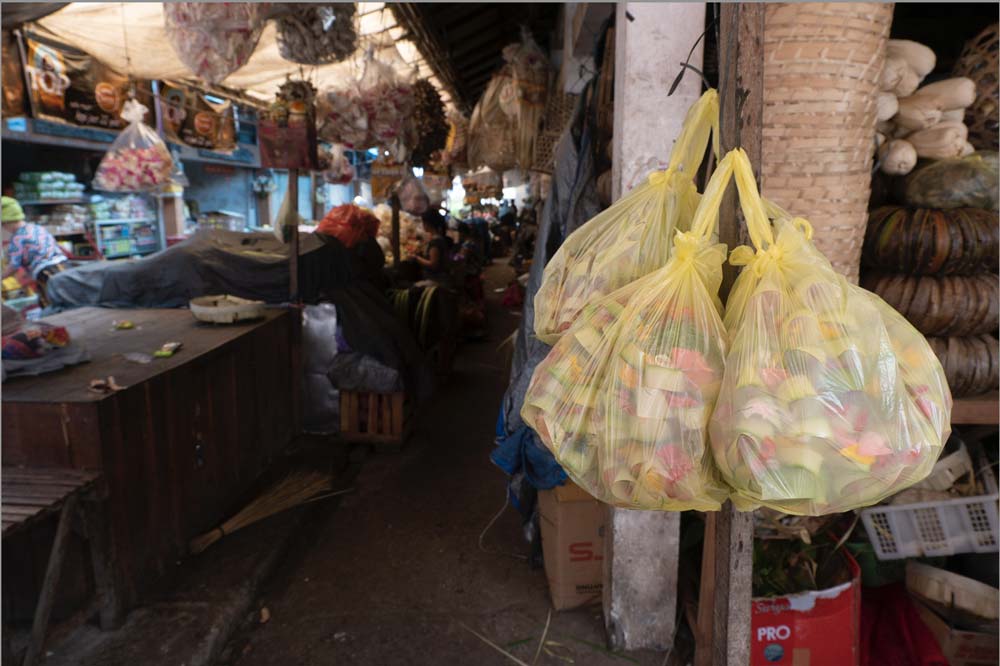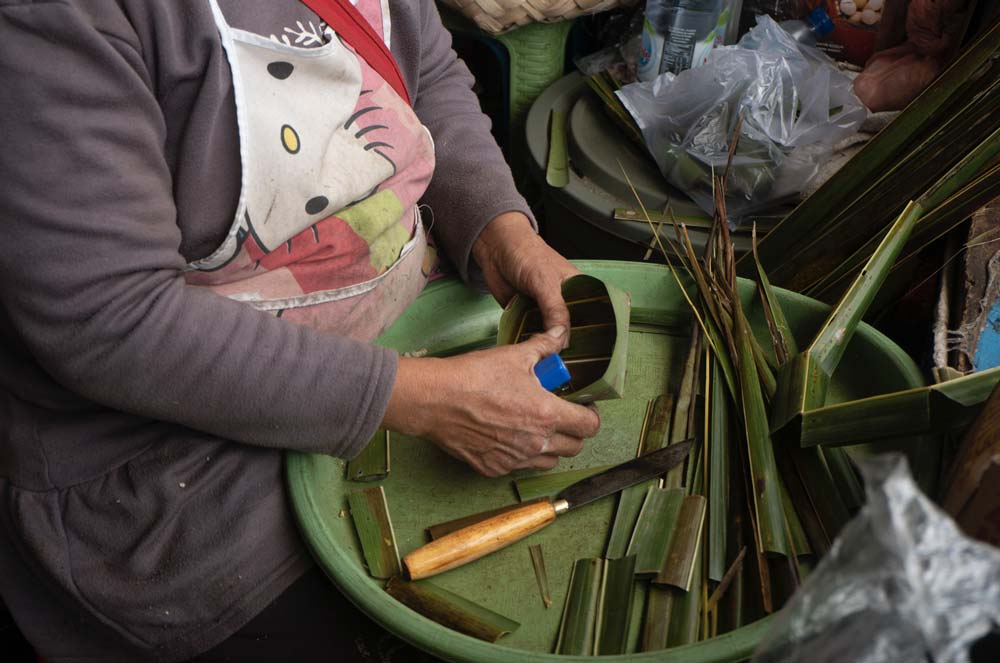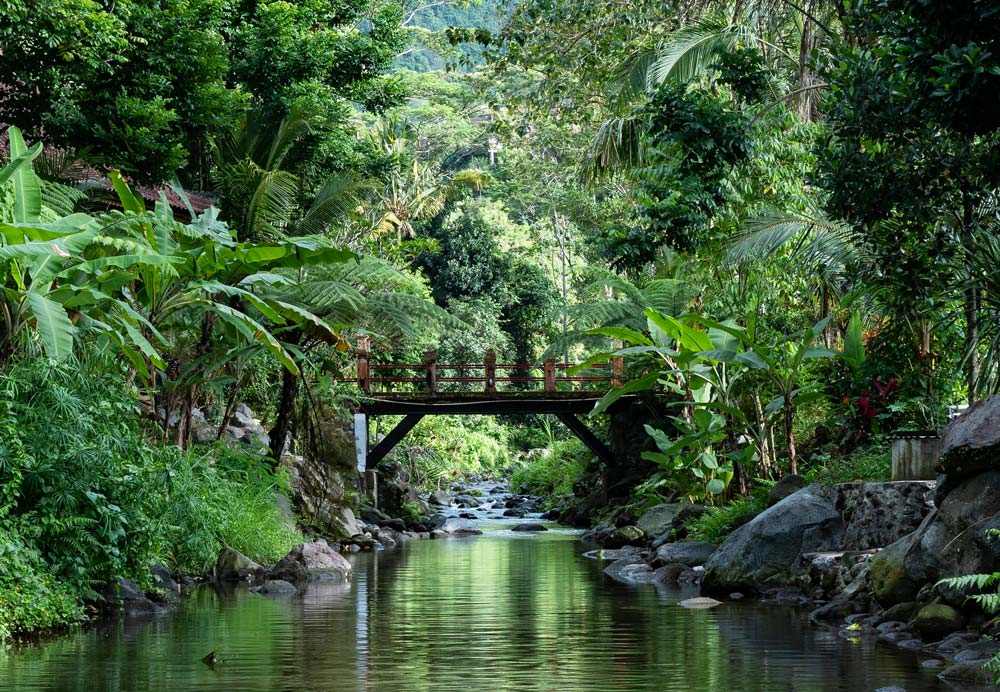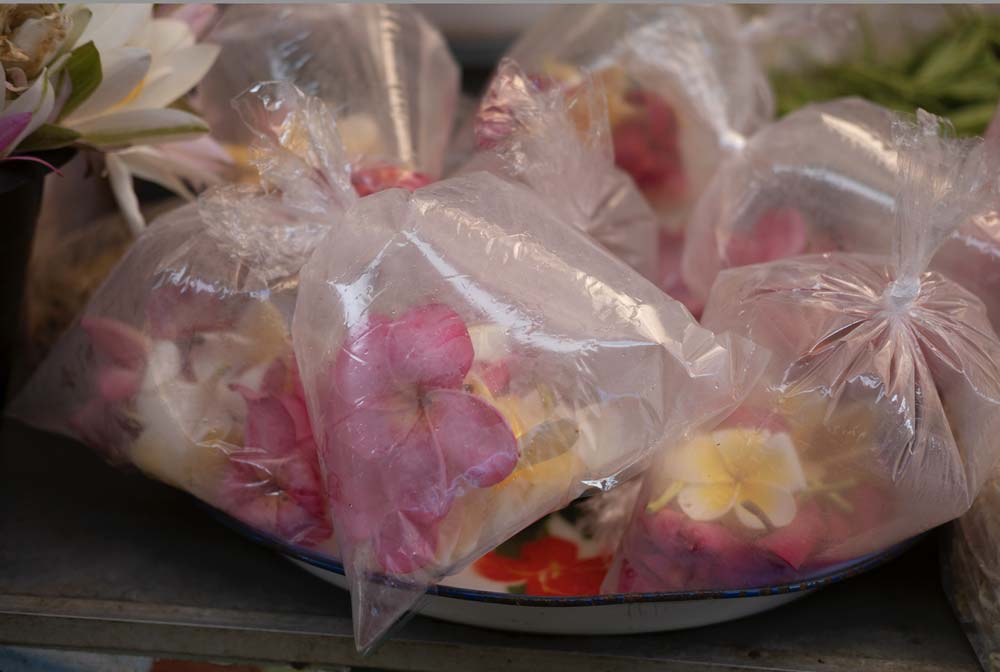Journalist Eric Buvelot and socio-ethnologist Jean Couteau have recorded 20 hours of discussion about changes that have happened in Bali since the 70’s. The conversation was structured and segmented according to many different aspects of Balinese life, mostly from a socio-historical perspective, to trace all the overturning in Balinese mores since 50 years, when modernity started to shape new behaviours.
At the core of these changes is the birth of individuality in a communal society and the revolution it implies. The resulting changes have been more significant in 50 years than the ones happening during the previous millennium. A 16-chapter discussion book was published in France by Editions GOPE with the purpose of measuring to which extent Bali has morphed in so little time, a work never done before, encompassing all Balinese social matters. The English one will follow in 2022 with a translation made by renowned Bali-based American writer Diana Darling and published by Interactive Publications Pty Ltd (Australia).
This month, Eric and Jean look at how the the relationship between the Balinese and their environment has changed over the decades.

Eric Buvelot — The adverse impacts linked to development are endless in Bali, the chaos is frightening.
Jean Couteau — I think you first have to start with the reverse. Forty or fifty years ago Bali was a space of absolute order. Everything was managed by natural standards. The architecture was made of natural elements, stone, bamboo, mud brick — there was nothing imported, nothing industrial. Everything was linked to nature! The space itself was sculpted, mixing the presence of man in nature, for example the paddy fields, or the altars in the forest, and the presence of nature in human spaces, such as huge waringin trees (giant fig, sacred tree in Bali) in the middle of the villages. It was truly a space of harmony. The structure of the village itself was based on ecological standards. There was the upper part of the village, with the pure waters and the temple of the community; and the lower part of the village, with the drainage water and the cemetery. All this was perfectly coherent, a society perfectly adapted to its space, with an ad hoc cosmology.
— Perfect order!
— Yes, when the Balinese bought or sold food, they wrapped it in banana leaves. Plastic packaging was not yet imaginable. As for religion, it was one of surplus. All surplus production, such as flowers, fruits, rice, was consecrated to the divine, transmuted into offerings. The whole culture was an ode to this harmony between nature and man. It is no myth to talk about the harmony of Bali!
— Hence the fascination of the first visitors.
— It was beautiful. It was beautiful everywhere! There were no buildings along the roads. They were found only in villages, in areas where agriculture could not be established. This whole universe was harmonious, except for the frequent outbreak of the disease, with a very high infant mortality and a low life expectancy. But otherwise it was almost perfect. I knew this Bali. Perhaps this is the source of my frequent cynicism.

— What about the famous principles of Tri Hita Karana?
— The paradox is that the Balinese theorised about this harmony just when it was starting to disappear. These principles were formulated in the late 1960s by a wise old man I knew, Gusti Ketut Kaler, who produced some of the most interesting texts on Balinese customary law. The forest once occupied a very large physical space in Bali. I have known people from here whose family memory includes the opening of this or that forest, especially in Tabanan, or in the mountainous regions, which were very sparsely populated. Today there are four times as many inhabitants as in the 19th century.
— But isn’t there a sacred connection to trees in Bali?
— Yes, they are considered living beings. They are called eka pramana in the local tradition, which means that they are supported by a single life principle. Before cutting them down, one must make an offering, then also replant. Nature is rendered sacred. Traditionally, there is an everyday relationship with trees. For example, sculptors cut whole slats directly from the bark of large trees to make sacred masks. Barongs whose masks are carved from the same tree are considered brothers, and will visit each other in procession, from one village to another, with crowds and music in support. Here we are in the midst of the magic of Balinese culture, but also in the symbolic respect for nature.
— Have any forests survived?
— The one in West Bali, in the national park, but it is not in very good condition. Otherwise, on the slopes of Mount Batukaru and in a few remaining pockets …

Photo by Edward Speirs 
Photo by Edward Speirs
— Do you have any other phenomena in mind that would symbolise a major difference between before and after?
— The original Balinese black pigs have almost disappeared, replaced by a species imported from Europe, called “bule” (albino). It symbolises the ongoing transformation of Bali, especially as bule pigs have huge testicles. And they are given the same bule name as white foreigners.
— By the nineteenth century, Balinese pigs were already sold for export, especially to Chinese merchants.
— The dogs are different, too! The famous Kintamani dog is a European herding dog said to have originated from a mix in the early twentieth century with Balinese street dogs.
—Nonetheless, the breed is internationally recognised and its pedigree officially certified.
— In terms of ecology, we must also note that the entire coral reef around Bali has almost disappeared. Until the 1980s, coral was taken to make lime for buildings. The natural protection of the Balinese coast having thus disappeared, the abrasion of the coast is accelerating.
— Yes, we immediately think of Candi Dasa where the coral reef has been replaced by horrible concrete blocks to contain the abrasion…
— Like in Sanur. The coastal landscapes have taken a nasty blow.
— What about the mangroves?
— They’re relatively protected. But the beaches in Bali are indeed disappearing, due to the abrasion of the coastline. Think of the road network and its consequences for urbanisation and land use. Not to mention the landscapes, ravaged by construction along almost all the roads.
— Is it Indonesia on the move?
— Yes, with the urbanisation of coastal areas everything has changed visually. Bali is no longer recognisable.
— What about the architecture with this rampant urbanisation of developing Indonesia?
— When the Balinese began to structure their modern thinking, they also structured their architecture in a systematic and no longer hereditary local way. And they did so at the same time as they were theorising the principles of the Tri Hita Karana. These are the standards that are applied in the Renon district of Denpasar and in the hotels of Nusa Dua. But, if we look at the historical developments that followed, the famous classical Balinese architecture, organized around the sea-mountain axis and the local cardinal points, has almost disappeared! Again, at the same time as the Balinese were setting standards, the subject of those standards was starting to disappear.
— Yes, when the need to create standards arises, it is already too late …
— We have gone from a traditional system in which the architecture reproduces both the human body and the cosmos, to a decorative system that only needs a vague carved relief of Arjuna for a building to be described as “typically Balinese.” In fact, the principles of Balinese architecture are gradually crumbling. The paradox is that as they are disappearing, people insist ever more vehemently that traditional norms are the reality.
— You also need a lot of space for the traditional Balinese house, but today the land is expensive …
— There’s the problem. Formerly, it was indeed necessary to have enough land so that each son of the master of the place could have his own living space. Each new enclosure was built as a duplicate of the father’s enclosure, with a temple to honour the ancestors, a building for the parents, another for the children, and another for the elderly, all in a courtyard around an open space. It was in symbiosis with nature, a place where art could be born! This relationship to art has also changed with the disappearance of the symbiotic aspect. This type of habitat is endangered.
— What else has been ravaged with development?
— The rivers.

— Yet it is said that the Balinese religion is the religion of water, agama tirta.
— Yes, if the religion of Bali is indeed the religion of water, the Balinese person is a drop of water. The water descends from the heavens, like the ancestor, who is himself a drop of water (titisan). In addition, each village has multiple sacred water points, the beji, where temple palanquins and effigies are washed ahead of the gods’ visit in temple festivals. And the main work of high priests is to prepare different types of holy water (tirta) for the great rites of life and death. All this is hardly due to chance, because water is nourishing, it purifies. The origin, purity corresponds to upstream. Impurity, the end, death, to downstream. It is said, moreover, that the “field of pain,” hell, is located in the depths of the sea. All this is obviously linked to the dynamics of irrigation — and it is here that the grip of man is nested within that of nature. Why, under these ideal conditions, did the Balinese let plastic trash take hold of rivers and block irrigation networks, why did they put aside the old ecological balances of their tradition? Big question!
— Reklamasi issue is therefore not ecological but identity-based …
— Basically yes, even if people claim the opposite. Nonetheless, I think things are better managed since Reformasi. National and regional balances are better taken into account. And above all, there’s a new generation, freer and more autonomous in their way of thinking, with a small elite that’s very aware of major international issues, ecological in particular.
— This improvement has come through education, openness to the world, the internet …
— Yes, by a whole set of mutations … first by way of the Orde Baru. It was Suharto’s regime that set the economic machine in motion. Its relative success paradoxically generated the sociological changes that led to his fall from power — including mass education. Now, in the Reformasi era everything is more complex and better managed. The real difficulty remains in putting in place, in a coherent and non-traumatic manner, the infrastructure and institutions needed for modern socio-economic developments, and in raising the standard of living at the same time. There are still huge challenges in education, urban infrastructure, wastewater and waste management. This in an environment in which all the traditional socio-economic and socio-political networks are in the process of transformation, sometimes even disintegration.

— Indeed, their remarks often lack nuance, but rarely relevance… What about this umpteenth ban on plastic bags in Denpasar in convenience stores and supermarkets?
— Yes, plastic trash is a hazard for tourism. All of this requires action, especially as people talk about it in the newspapers, on social media networks. Ultimately, politicians are forced to take action — even if there is no comprehensive preventive vision on ecological issues, precisely because of the idealisation of the past.
— Let’s get back to the pollution of rivers and shores in Bali. Why do we still see people throwing bags of garbage in rivers when awareness campaigns started twenty years ago?
— People are not really aware. Historically trash used to be all biodegradable …
— Yes, but Bali has been rubbing up against consumer society for almost fifty years, two generations, isn’t that enough time to understand that plastic packaging does not disappear by magic?
— I come back again to the over-idealisation of the past and of tradition which is paramount in Bali. It does not encourage people to face the challenge of modernity, nor its realities. Even the reverse is true.








